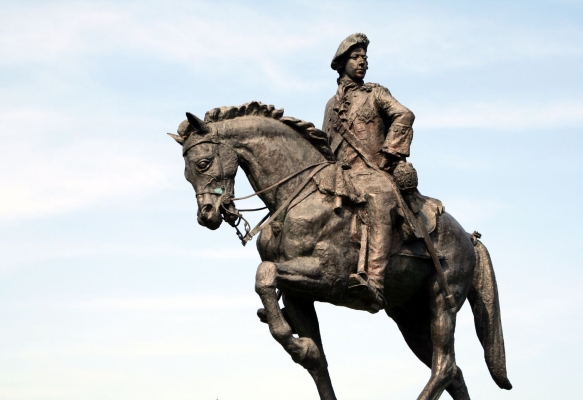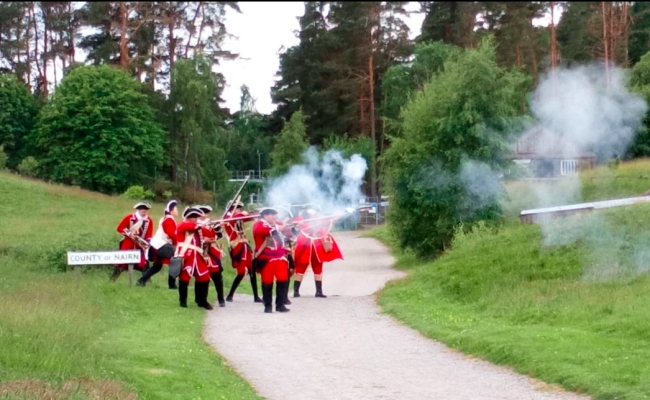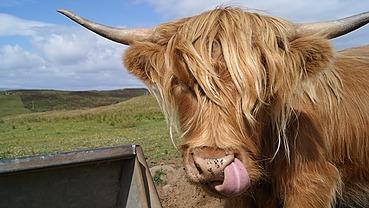Bonnie Prince Charlie and the Battle of Culloden
10th June 2024
Scotland will never cease to amaze and enchant visitors regardless of where they’re visiting. But among its many historical landmarks and breathtaking landscapes, there are few stories that stand out as much as Bonnie Prince Charlie’s time in Scotland and the Battle of Culloden.
Who Was Bonnie Prince Charlie?
Bonnie Prince Charlie (Charles Edward Stuart), was born in Rome to the exalted Stuart family and had a claim to the British throne. While he spent much of his early life in Italy, he eventually traveled to France in 1744 to take part in a planned invasion of England to restore the Stuart monarchy with his father.
However, the fleet of ships was partially wrecked by heavy storms and adverse weather. This didn’t deter Charles, who resolved to continue to Scotland following a discussion with the Jacobites, the name given to the supporters of the exiled Stuart King James II. Eventually, Charles would land by ship on the western coast of Scotland, and go on to lead the Jacobite rising of 1745.
The Jacobite Rising of 1745
With the goal of reclaiming the British throne for his father, Charles, sometimes known as “The Young Pretender”, launched a rebellion at Glenfinnan in the Scottish Highlands. This led to the Battle of Prestonpans, the first significant engagement of the Jacobite rising that pitted Charles against a government army led by Sir John Cope. The battle lasted less than thirty minutes despite the poorly-equipped Jacobite army of less than 2,000 soldiers.
This was largely in part due to the inexperienced recruits that were left behind to defend, as the bulk of the British forces were engaged in the War of the Austrian Succession in Flanders in Belgium. Charles knew about this situation and aimed to take advantage of the weakened British forces while he could. He would eventually march on to capture Edinburgh, and even convinced Scottish forces to join him to invade England, assuring them of support from English Jacobites.
Charles and his army made it as far as the city of Derby in England, but unfortunately the support from English Jacobites never materialized. Numerous government armies who had been called back from the war in Europe forced the outnumbered Jacobites to retreat back across the border.
Charlies did win another significant battle back on Scottish soil, the Battle of Falkirk Muir (partly thanks to some French reinforcements). While not as impactful and morale-boosting as the Battle of Prestonpans, it helped the Jacobite army stay composed.
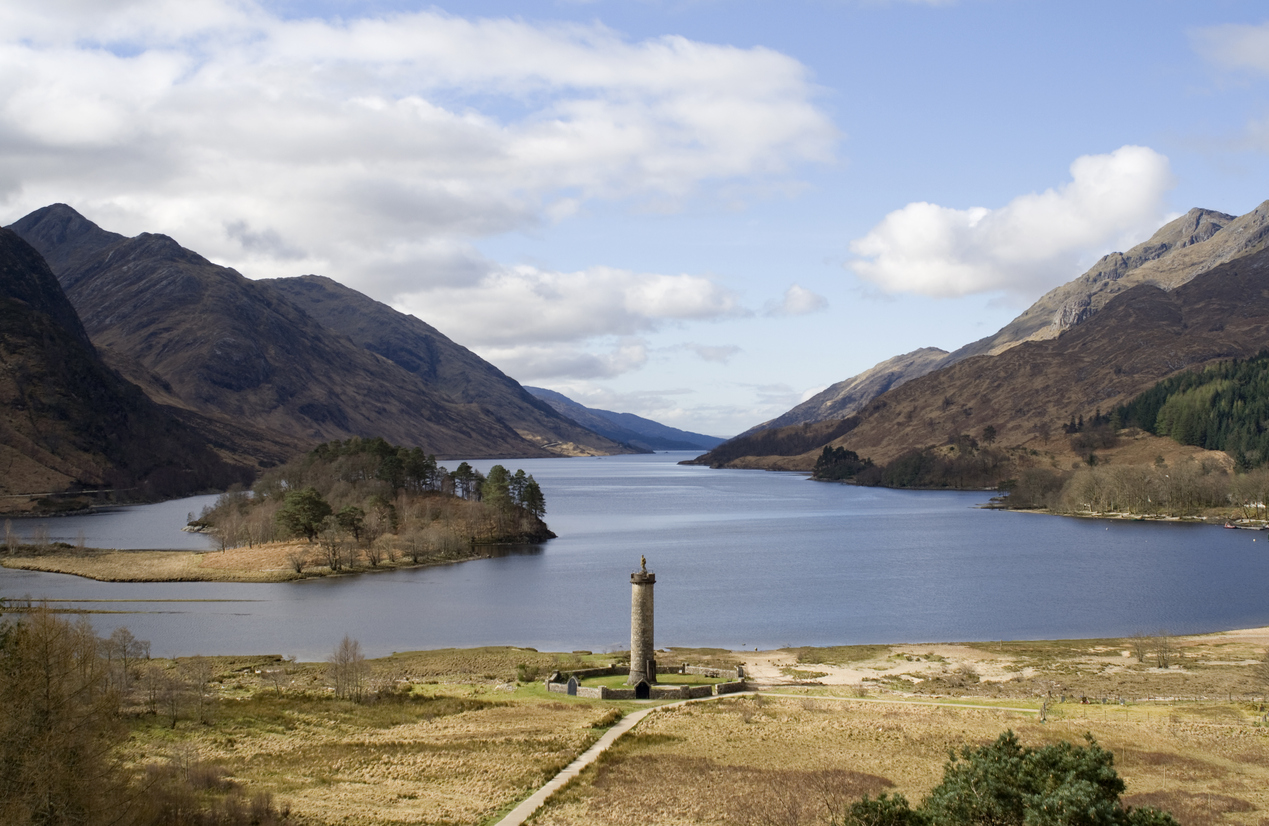
Glenfinnan
The Battle of Culloden
Despite their momentum, the Jacobites continued to retreat into the Highlands. Before the Battle of Culloden, the Jacobites had a 5,000 strong army, but they were hungry and exhausted thanks to a Royal Navy’s blockade which stopped the supportive French shipments to the army.
The British commander, William Augustus, Duke of Cumberland was camped nearby with a disciplined army of 9,000 men. The Jacobites got wind that it was his 25th Birthday on the night of April 15th 1746 and knew that he had issued two gallons of brandy to each regiment under his control in celebration. Lord George Murray, Lieutenant-General of the Jacobite army, planned to use this to their advantage by striking the government army at night, hoping their troops would be a little worse for where. However, due to a lack of numbers, confusion and delays, the attack was ultimately aborted, forcing the Jacobites to retreat to the nearby Culloden Moor.
The Battle of Culloden, near Inverness commenced the following day, April 16th 1746. It was a terrible location for the Jacobites as it afforded Cumberland’s artillery with an unobstructed field of fire. For nearly half an hour, the Highlanders endured relentless cannon fire without being able to mount an effective response. Orders to attack moved sluggishly through the disorganized Highland chain of command, but eventually, the Highlanders were set into motion. They charged across the 350 yards separating them from the enemy, but ultimately fell in the hand to hand combat.
The battle was ruthless. With the Jacobites outnumbered and outgunned, it is estimated that around 2,000 troops from the Jacobite army were killed and wounded, ending the uprising and restoring peace to the Highlands. The fighting lasted less than an hour.
While Charles led the uprising to several victories, he fell short of reclaiming the British throne for his father and eventually fled back to France. The Battle of Culloden effectively ended the Stuart cause. Despite several attempts to revive the Jacobite army, Charles would ultimately return to Rome where he lived to 67, passing away in the same place where he was born. His exploits and failed attempts to take the throne would paint him as a romantic figure of heroic failure, leaving an enduring legacy and historical legend that remains today.
Visiting Culloden Moor
Today, Culloden Moor offers breathtaking views and profound insight into the battle and its significance. The visitor center offers exhibitions that include accounts from genuine soldiers that took part in the Battle of Culloden There’s also a battle immersion film, showcasing the horrors of the battle that took place at Culloden. The visitor experience gives you a real appreciation of the true scale of the battlefield with amazing rooftop views.
As the last hand-to-hand battle fought on British soil, the Battle of Culloden has historical significance and is well-documented at the visitor center. The battlefield itself has been restored to be as close as possible to the day of the battle.
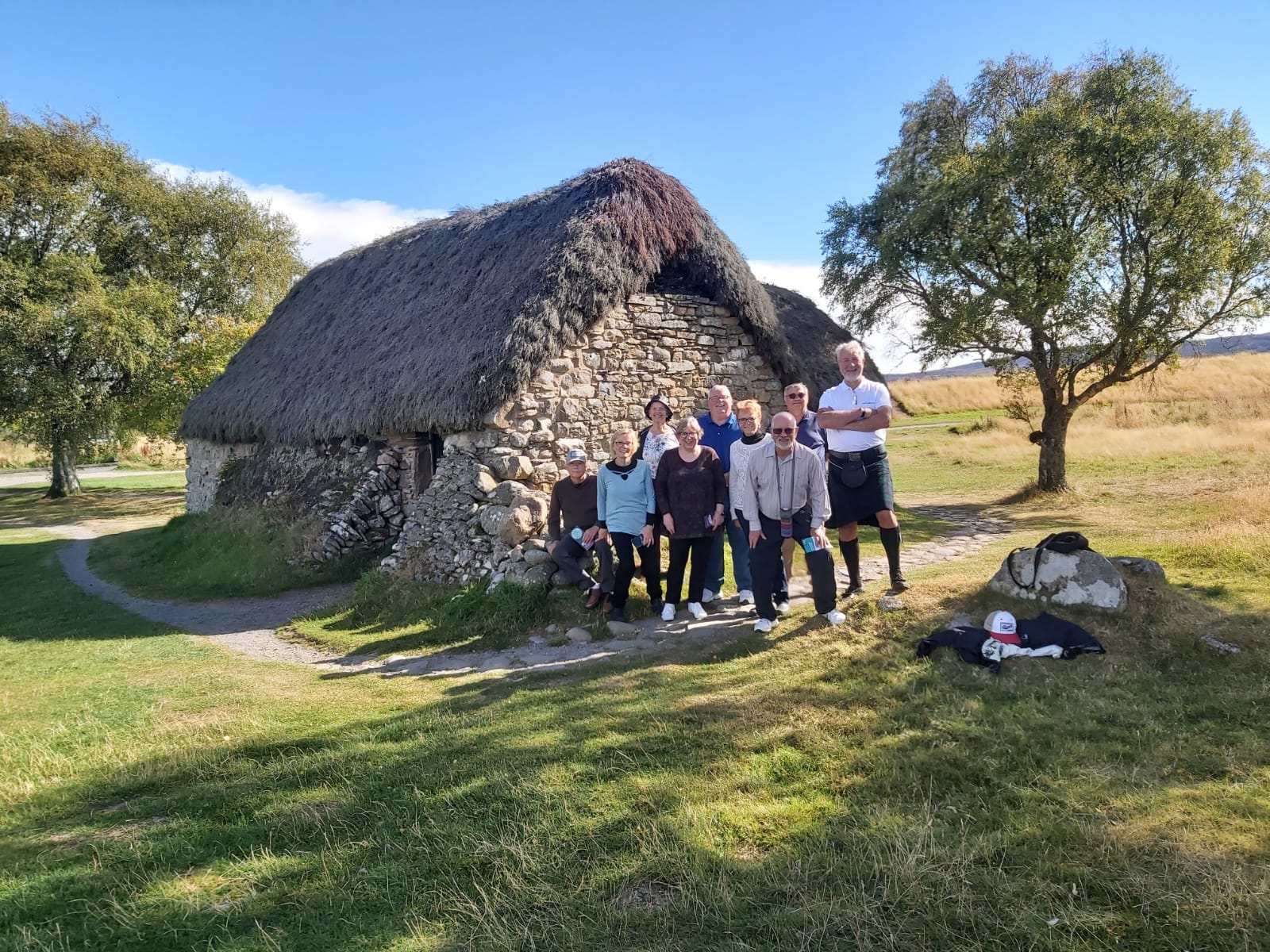
Colin and guests at Culldon Moor
Other places to visit in Inverness
If you are visiting Culloden Battlefield, you’ll be surrounded by numerous other historic sites which are well worth a visit.
Inverness Cathedral
Inverness Cathedral, a beautiful church situated by the banks of the River Ness is the perfect place to enjoy some quiet reflection after a lively few hours learning about Jacobite battles. Constructed between 1866 and 1869, the Cathedral in the Gothic Revival architectural style, was designed by the esteemed Inverness architect Alexander Ross. The cathedral is dedicated to St. Andrew, the patron saint of Scotland.
Inverness Castle and Museum
Just across the water, you will find Inverness Castle which offers breathtaking views and a historical overview of the local region. Although the castle itself isn’t open to the public, the surrounding area and the Inverness Museum and Art Gallery provide fascinating insights into the area’s local history and culture.
The museum showcases artifacts from the Pictish era to the present day, and there are deep dives to explore Inverness’s rich heritage. With many interactive displays and exhibitions, Inverness is a must-visit location for anyone who wants to explore the history and legacy of Scotland.
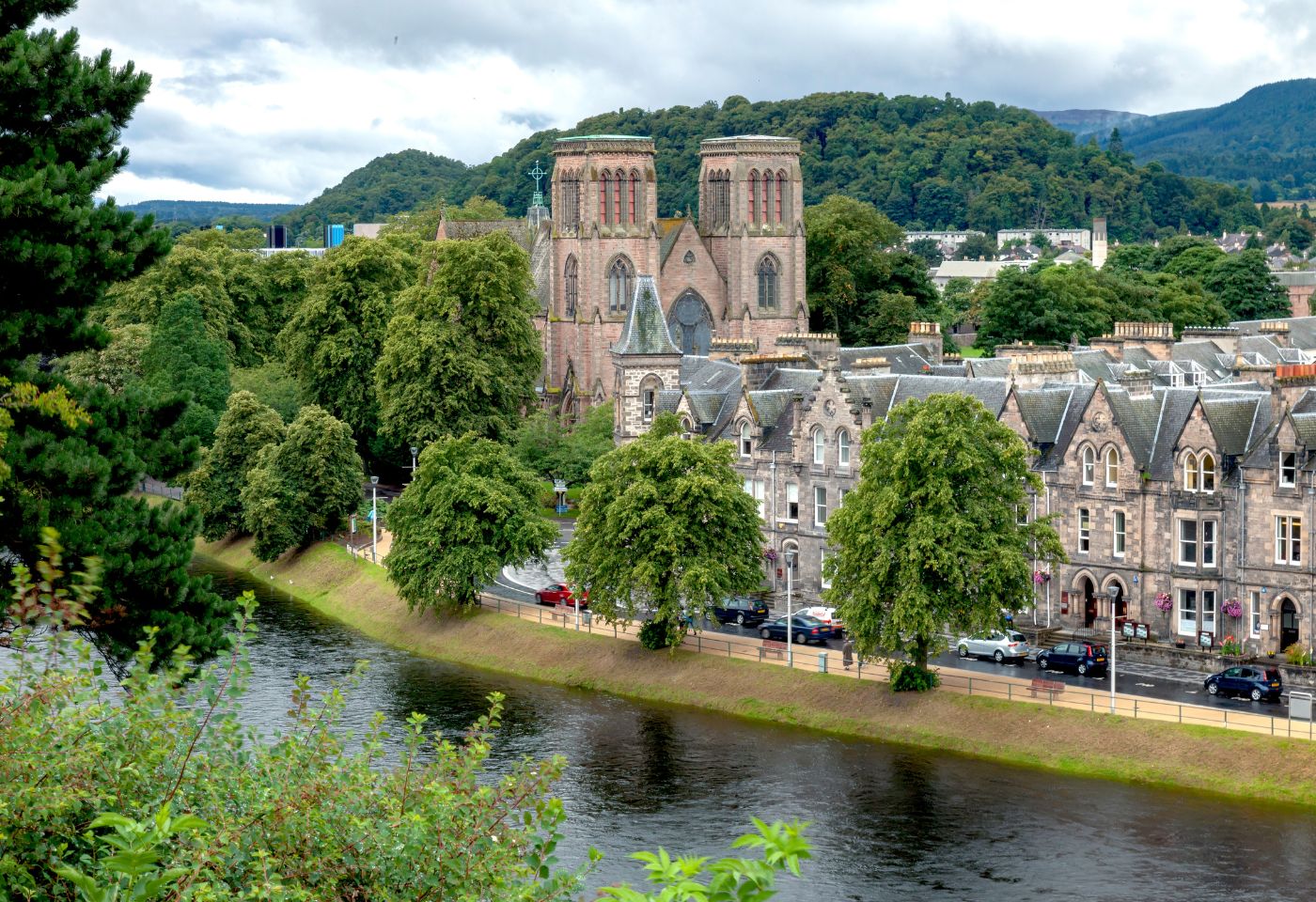
Inverness Cathedral
Clava Cairns
Nestled in a picturesque woodland near Culloden, lie the sacred burial cairns of Bulnuaran of Clava, commonly known as the Clava Cairns. Explore the ancient cemetery, home to passage graves, ring cairns, kerb cairns, standing stones, and burial monuments, offering a fascinating glimpse into prehistoric times.
Three remarkably well-preserved cairns, built to house the dead, provide insights into the beliefs of Bronze Age society. Each cairn has a central chamber, with the outer two featuring entrance passages, while the central ring cairn is fully enclosed. All are encircled by a stone circle.
Nearby, the smaller cemetery at Milton of Clava contains the remains of a medieval chapel, another cairn, and potential standing stones, adding to the area's historical significance.
If you are a fan of the Outlander series, you may recognise this sight! This is where Claire Randall is transported to when she goes back in time.
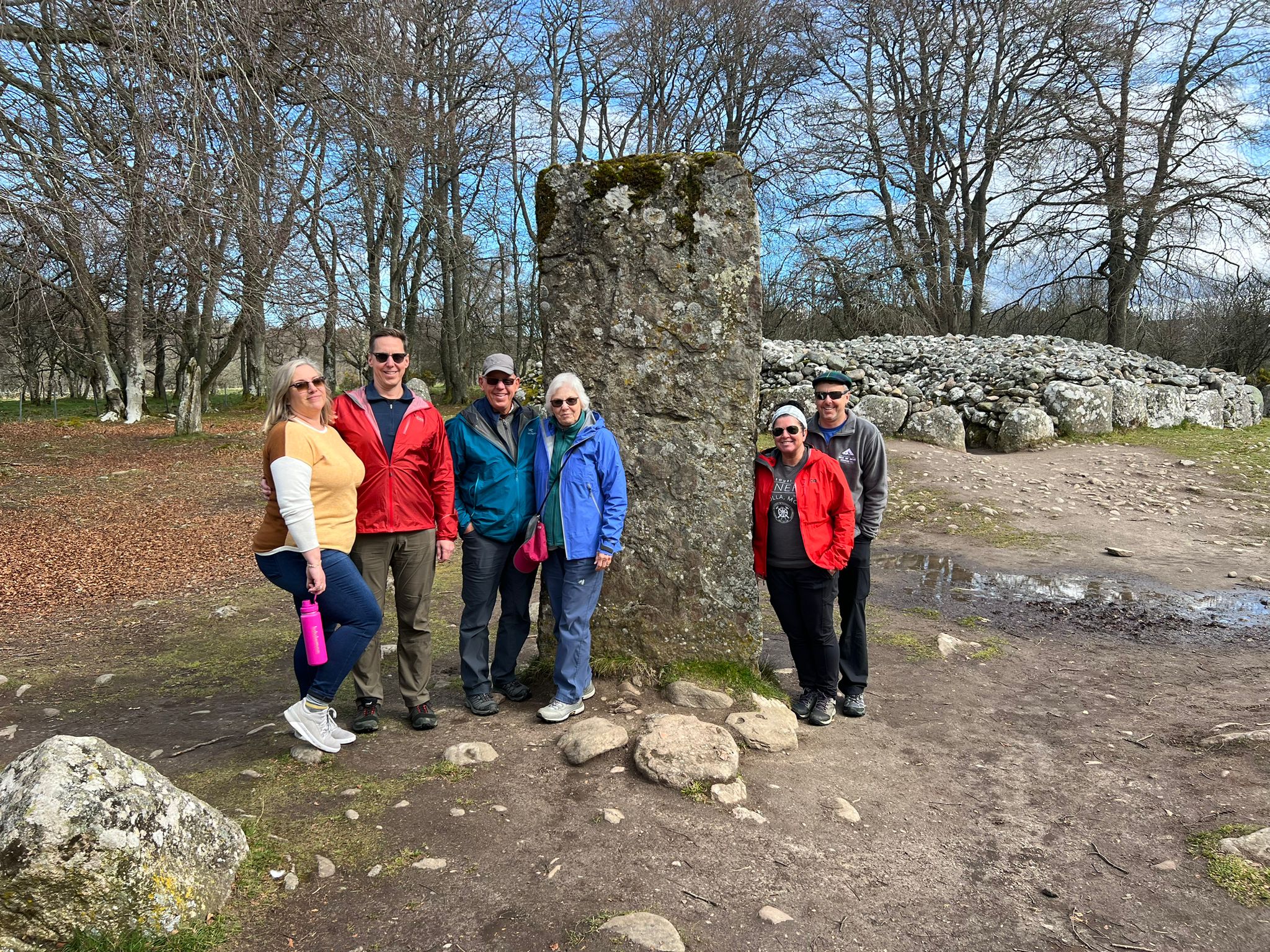
The Jonstone Family at Culloden Muir
Exploring the history of Bonnie Prince Charlie
Reading about Scottish history is fascinating, but having stories told to you right in the location where they took place? Nothing beats that. If you want to immerse yourself in the world of Bonnie Prince Charlie and his Jacobite army, it’s time to book your vacation in Scotland. We will organise all of your excursion tickets, accomodation, breakfast and evening meals. All of our escorted tours show you the very best of Scotland, the road less travelled and offer a five star experience every single time.
We recommend our 7 Day Best of Scotland Tour if you would like to learn more about all things Bonnie Prince Charlie!
See you very soon.

